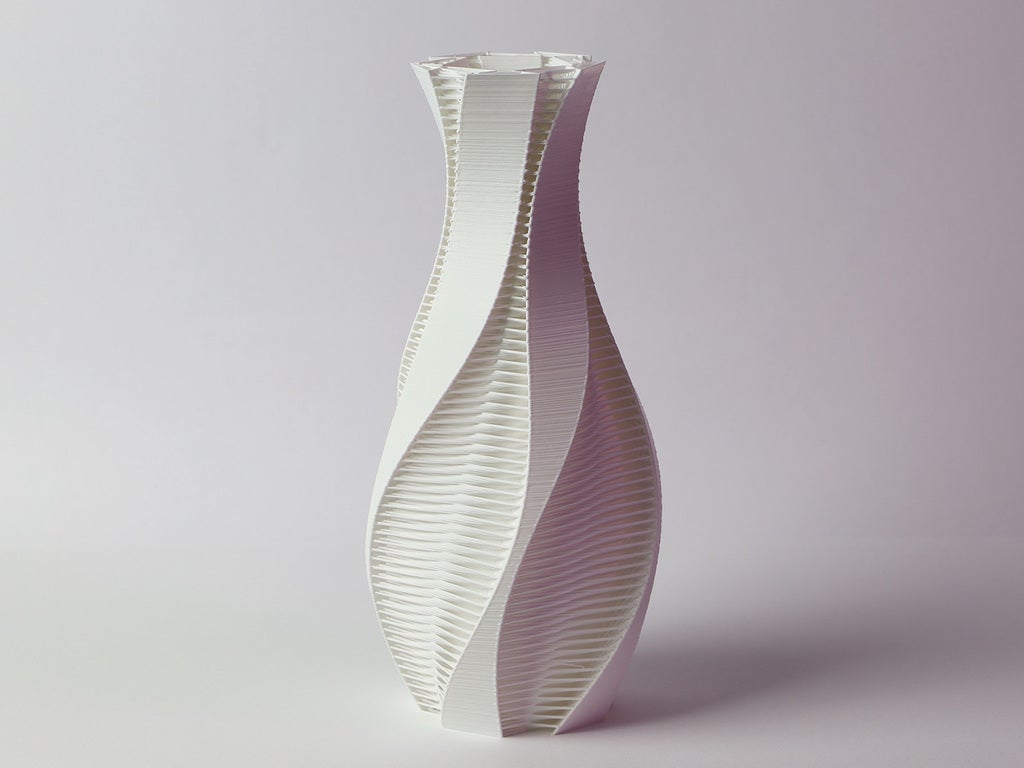
Twisted vase with strands
prusaprinters
<p>Twisted vase with strands.</p><p>An experiment on introducing stiffness into a thin wall structure by adding strands of filament on both sides of a shell. The shell itself is a parametric modell, the strands are attached to specific points in a repeating manner. They're printed by extruding material "into the air". This technique is called bridging, because it doesn't make use of support structures. Each strand consist of two layers. This leads to a very stiff structure, which won't deform when squeezed. The diameter of the vase is about 90mm, the height ~200mm.</p><p>Geometry was created using Rhino/Grasshopper.</p><h3> </h3><h4>Print Settings</h4><p><strong>Printer:</strong></p><p>Generic</p><p><strong>Rafts: </strong></p><p>No</p><p><strong>Supports:</strong></p><p>No</p><p><strong>Resolution: </strong></p><p>0.3mm</p><p><strong>Filament:</strong><br/><br/>Generic PLA </p><p><strong>Notes: </strong></p><p>Default settings with a 0.3mm layer height should work. Supports are not needed, bridging can be optimized by printing slower and increase cooling.<br/>For PrusaSlicer activate "detect thin walls", in Cura "print thin walls".</p><p>The walls are 0.5mm, this is also recommended for extrusion width.</p><p>Scaling the model up or down won't probably work well, you might want to make use of XY-expansion in this case.</p><p>Please note: The model was not intended to be used for vase mode or spiral mode.</p>
With this file you will be able to print Twisted vase with strands with your 3D printer. Click on the button and save the file on your computer to work, edit or customize your design. You can also find more 3D designs for printers on Twisted vase with strands.
